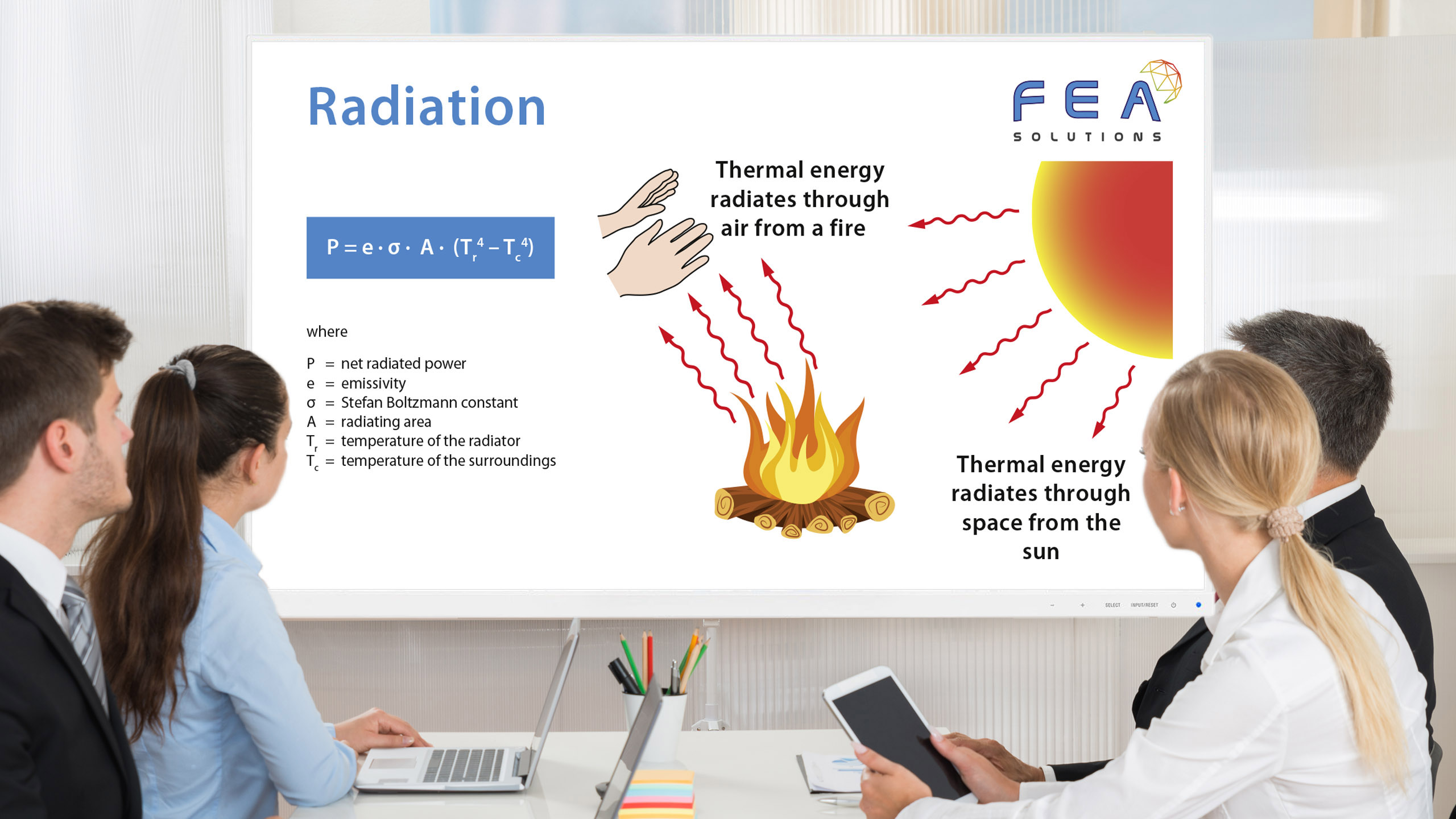
10 Mar Radiation
Radiation is a form of heat transfer (https://fea-solutions.co.uk/heat-transfer-analysis/) that does not require the presence of particles to transfer heat energy, but transfers energy through the emission of electromagnetic waves. Therefore Radiation is the only form of heat transfer that can take place in a vacuum.
All materials radiate thermal energy which is dependent on their temperature. The higher the temperature of that object, the more thermal energy will be radiated. The Sun is the most obvious example of heat radiation, transferring heat across the solar system.
Thermal Radiation depends on 4 factors:
– The radiating surface area.
– The temperature of the radiating object.
– The temperature of the surroundings.
– The material’s emissivity.
The emissivity is a material property. For an ideal radiator, the emissivity would be 1. However, for common materials it is a lot lower than that. For example, aluminium has an emissivity coefficient of 0.09.
Something that can affect the emissivity of a material is the surface finish of the material. A dull, matt or rough surface will absorb and emit thermal radiation much better than a smooth, shiny surface. It is real-world experience that a black surface heats up much more in sunlight than a shiny white object.
Please call us today on +44 (0)1202 798991 for any engineering analysis requirements you might have.
